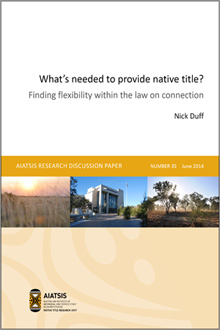What’s needed to prove native title? Finding flexibility within the law on connection
Throughout Australia, native title claims are resolved primarily through negotiated consent determinations rather than contested litigation.1 Decisions by governments to enter into consent determinations may be guided by a number of considerations, including justice and the recognition of rights, the intergovernmental commitment to ‘Closing the gap on Indigenous disadvantage’, the promotion of Indigenous economic development, and the promotion of respectful relationships between governments and Aboriginal and Torres Strait Islander peoples. There are also a number of reasons that governments may consider themselves obliged to scrutinise the substance of native title claims carefully: they may be concerned to ensure that the ‘right people for country’ are recognised, they may be concerned about the potential effects of native title on the economic benefits of mining and other development activity, or they may consider it legally improper to agree to a consent determination unless a set of ‘minimum’ legal requirements are met. This last consideration provides the main question for this discussion paper: what are the legal constraints on how flexible governments can be about the proof of native title?
